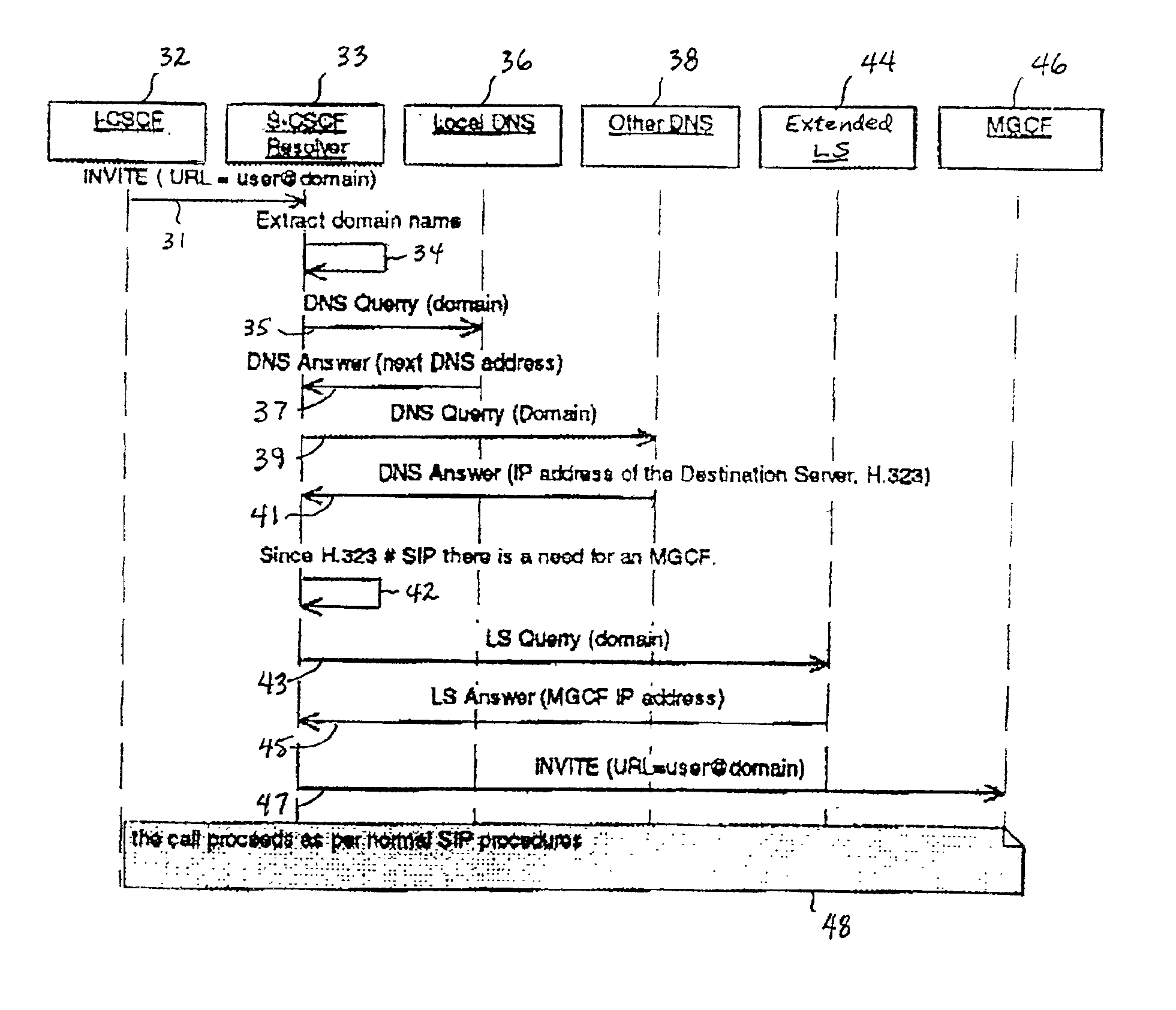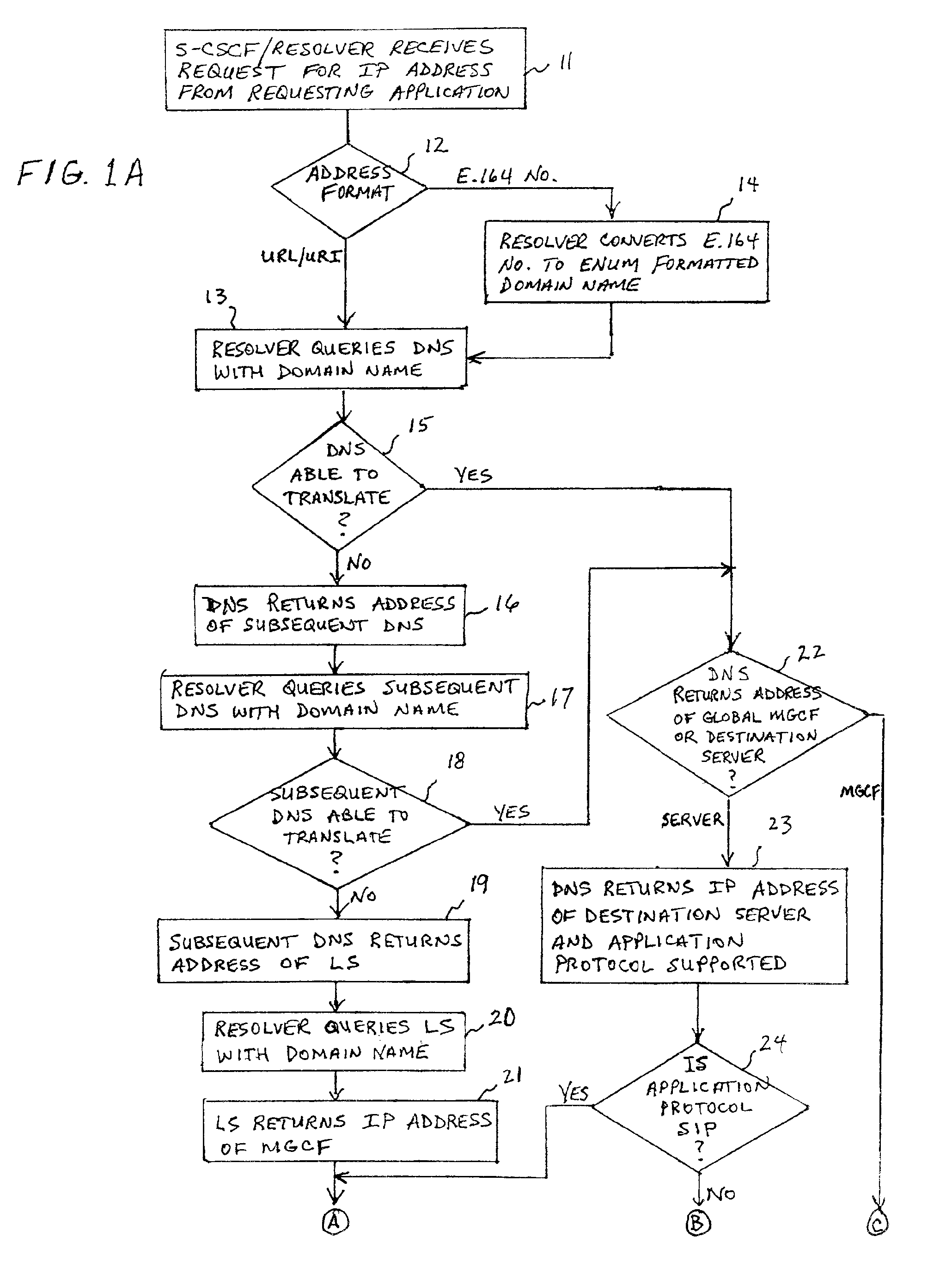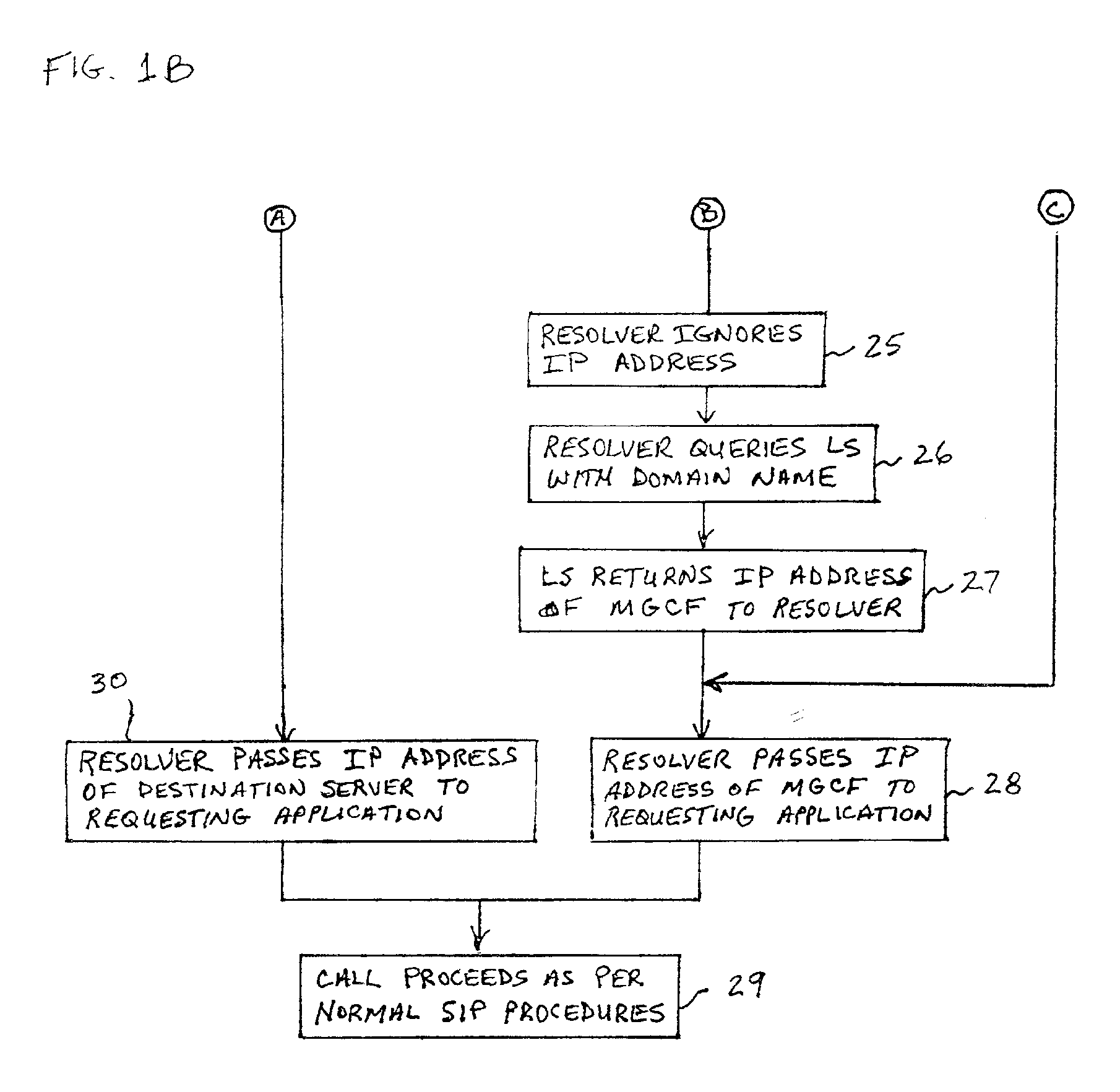System and method for address resolution in internet protocol (IP)-based networks
a technology of internet protocol and address resolution, applied in the field of telecommunication systems, can solve the problems of compounded address resolution problem and no methodology to enable address resolution
- Summary
- Abstract
- Description
- Claims
- Application Information
AI Technical Summary
Benefits of technology
Problems solved by technology
Method used
Image
Examples
Embodiment Construction
[0028]The system and method of the present invention allows 3G-all-IP operators to take advantage of the strengths of all three addressing methods. This is done by handling the three methods in an unified way, and by modifying a CSCF Resolver and the information stored in the DNS and LS. The CSCF Resolver is a client that interrogates the DNS. It may interrogate a first DNS which refers it to another DNS, or the first DNS can automatically propagate the interrogation on its own. The Resolver is an operating system component that is requested by various applications running on a host, to translate a DNS name. It is the component that performs the dialog with the DNS system.
[0029]The present invention provides the operator with full flexibility in defining its addressing resolution preferences, by providing the freedom to choose the most appropriate address translation method, for any specific call case. The present invention extends the functionality of the DNS to manipulate the data...
PUM
 Login to View More
Login to View More Abstract
Description
Claims
Application Information
 Login to View More
Login to View More - R&D
- Intellectual Property
- Life Sciences
- Materials
- Tech Scout
- Unparalleled Data Quality
- Higher Quality Content
- 60% Fewer Hallucinations
Browse by: Latest US Patents, China's latest patents, Technical Efficacy Thesaurus, Application Domain, Technology Topic, Popular Technical Reports.
© 2025 PatSnap. All rights reserved.Legal|Privacy policy|Modern Slavery Act Transparency Statement|Sitemap|About US| Contact US: help@patsnap.com



